People
Meet Phillip K. Smith III, Coachella’s Favorite Sculptor and the Busiest Artist You’ve Never Heard Of
He's got no gallery representation—just a solid Instagram presence and a knack for old-fashioned hustling.
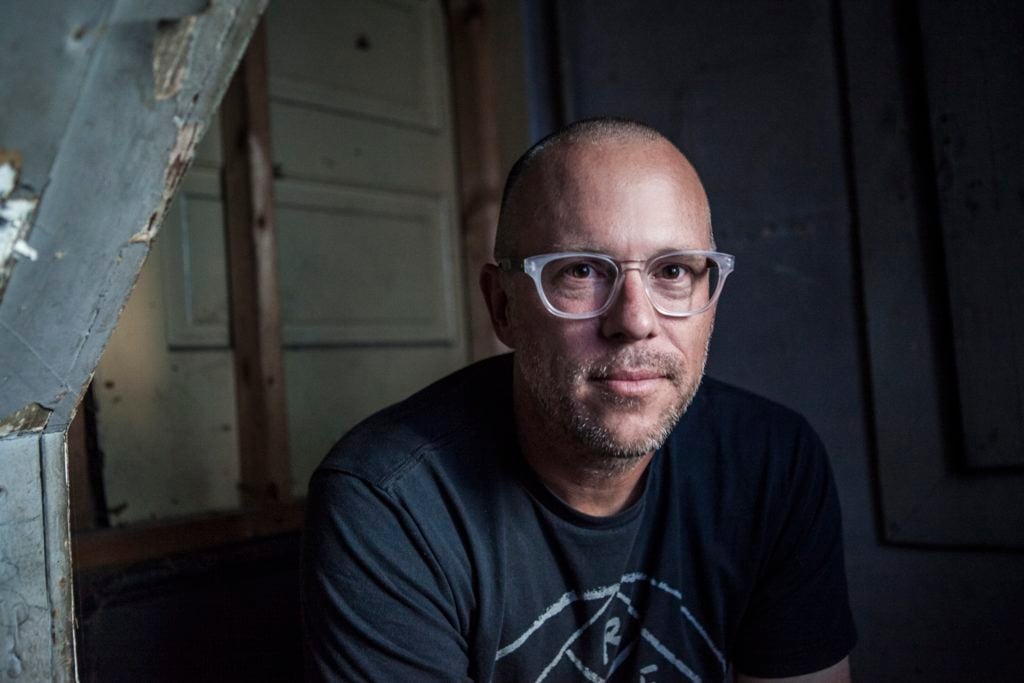
He's got no gallery representation—just a solid Instagram presence and a knack for old-fashioned hustling.

Alexandra Peers

“Everybody wants their bean now,” Phillip K. Smith III says with a grin, perhaps even gloating a bit. The architect-turned-artist is talking about Chicago’s Cloud Gate, the shiny, popular public sculpture by Anish Kapoor that has become emblematic of that city.
Its success, and other towns’ desire for a similar totem—all the better if the viewer can interact with it—has propelled Smith’s career of late. The California artist’s light-based works and huge, site-specific installations are on view or soon to take root in more than a dozen cities, including Oklahoma City, Pomona, Bellevue, Detroit, and Los Angeles.
With a 300-mirror surfside installation that debuted in the Faena Arts District during Art Basel Miami Beach last year and his most ambitious project to date opening in April in Milan, Smith may be the most successful—or, at least, the busiest—artist you haven’t heard of. Unless you hang at Coachella, of course, where much of his fame began.
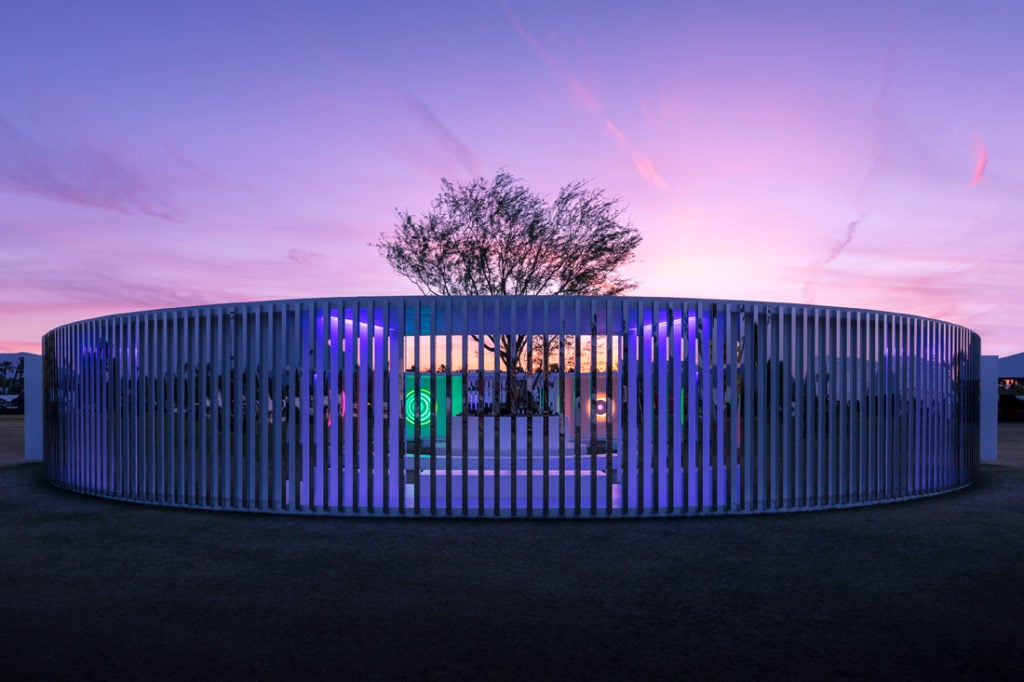
Phillip K. Smith III’s Portals (2016) at the Coachella Music & Arts Festival. Photo © Lance Gerber.
Today, Smith is a model of a different kind of artist: One who has found success outside of the mega-gallery system and who owes much of his current status not to a small group of gatekeepers, but to a combination of Instagram, old-fashioned hustling, and a wholesale disruption of the gallery model.
Smith’s mirrored towers and LED-lit fiberglass sculptures tick a surprising number of the 2018 art world’s boxes: experiential art, land art, environmental art, installation art, digital art. One of his most successful pieces even got its kickstart with online funding.
He’s wrestling, too, with a lot of questions that hover over contemporary artists today: How commercial is too commercial? Am I over-extended? Screwed without a dealer? Accepting the right commissions? What happens, Smith wonders, when a significant part of his artistic process involves sitting in a “big comfy chair, plugging in my laptop, and staring at this thing”? And, now that he finally has the freedom to make choices about his career, what should he do next?
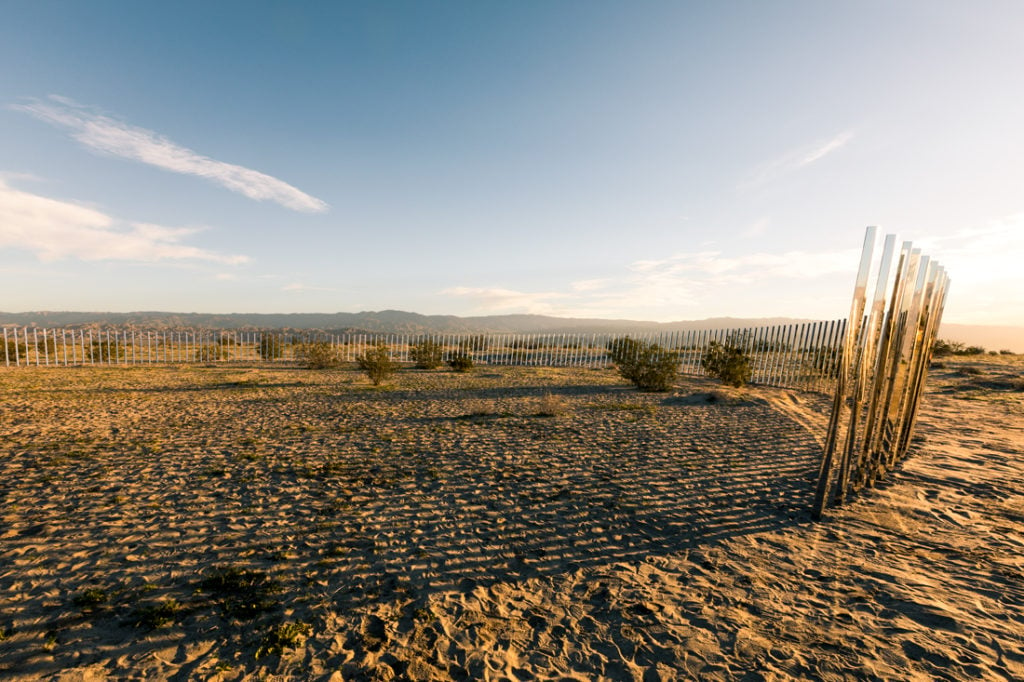
Phillip K. Smith III’s The Circle of Land and Sky (2017) at Desert X. Photo © Lance Gerber.
At 45, the bespectacled artist is trim, reserved, and thoughtful. He was born in Los Angeles in 1972, but his family moved to the desert when he was in first grade. After stints in Providence, Boston, and New York, he returned to Palm Springs for good in late 2000.
Today, his studio is located in the nearby town of Palm Desert. He is flanked by assistants, construction materials, and an attentive moon-faced French bulldog, Teddy, whose click-clacking paws provide a lively soundtrack. He employs three full-time assistants, up to eight more on an as-needed basis, and a bevy of outside fabricators.
Smith cites as artistic inspirations Robert Irwin, James Turrell, Christo—“I’m the next generation pursuing those artists”—and, perhaps most reverently, Mark Rothko. He dreams of computer-animating a Rothko, and wonders whether the master was ever asked to change the colors he was using, as Smith often is with his electronic works. (‘It’s a no,” he clarifies. “It’s like a painting.”)
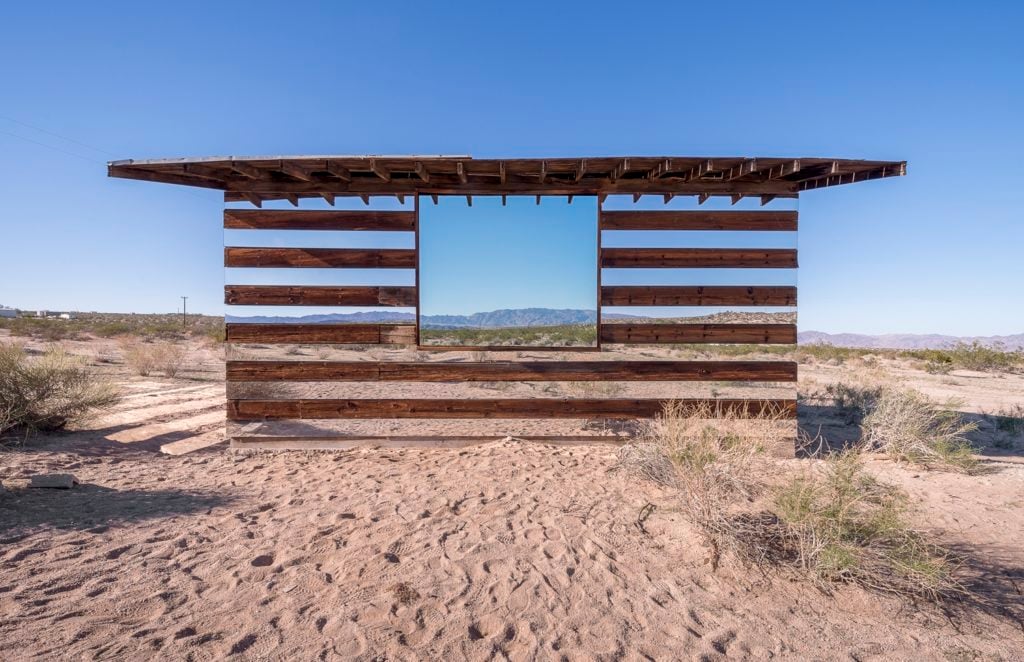
Phillip K. Smith III’s Lucid Stead in Joshua Tree, California. Photo © Steve King.
Smith got an architecture degree from the Rhode Island School of Design in 1996, but ultimately found work solely as an architect unfulfilling. Then, in 2013, everything changed when he raised about $22,000 on a fundraising site for an installation that eventually became Lucid Stead, the work that would put him on the art-world map. (Commissions today cost over ten times that—up to $3 million.)
To create the piece, he tricked out a 70-year-old homesteader shack in Joshua Tree National Park with mirrors and lights. At various points over the course of the day, the structure seemed to glow, ignite, or disappear. Striking and atmospheric, it drew crowds and “has its own fan club,” Smith notes. Architect Magazine listed it as one of the “very best projects of 2013” and the Los Angeles Times named Smith as one of the three “2014 faces to watch in art.”
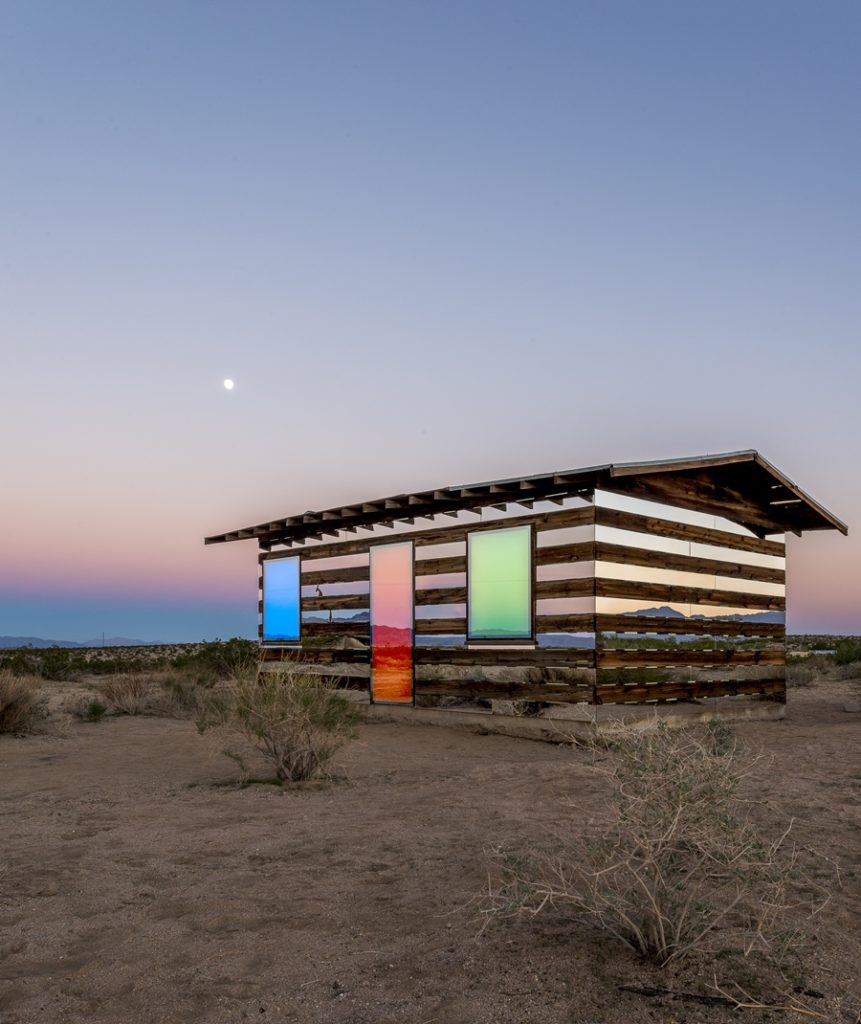
Phillip K. Smith III’s Lucid Stead (2017). Photo © Steve King.
Then, Coachella came calling—and, initially, Smith cringed. A lot of what shows up at music festivals, he says, is just “concert art… there’s some flames involved. Welding. I said, ‘I’m not a part of that world.’ And they said, ‘We don’t want that.’” Instead, they wanted him to bring “the shack,” also known as Lucid Stead. “But I said, ‘I don’t really want to be the shack guy.’“
That first year, he created mirrored towers called Reflection Field. The following year, he got fancy and created Portals, a lounge with a giant mesquite tree in the center flanked by animated circles of colored light. He set the animations to move faster than he would have liked in order to please the younger crowd. “I was trying to keep pace with the event,” he says.
It got Instagrammed a lot, which delighted him. “Where else can any artist have an enduring vivid presence that is more public and more free than Instagram?” he asks. “For me, Instagram has certainly become the new immediate way to research an artist and their work.”
Fast-forward to this month, and Smith is crafting one of his most high-profile projects to date: a site-specific installation inside Milan’s 16th-century Palazzo Isimbardi. It was commissioned by the Scandanavian fashion house COS and opens in tandem with the Salone del Mobile, Italy’s huge design fair, on April 17.
Smith has big shoes to fill. The company previously has teamed up with established design firms like Snarkitecture and Studio Swine to create much-photographed installations. “The pressure is on,” he says.
COS selected Smith because of how his “installations interact with their natural surroundings, allowing us to experience spaces in new ways,” says Karin Gustafsson, the creative director of the fashion brand, who adds that she’s “eager” to see how his work appears in an urban environment. (So far, COS is keeping the design under wraps, leaking only one photo: a glimpse of a fan of mirrors angled at the sky.)
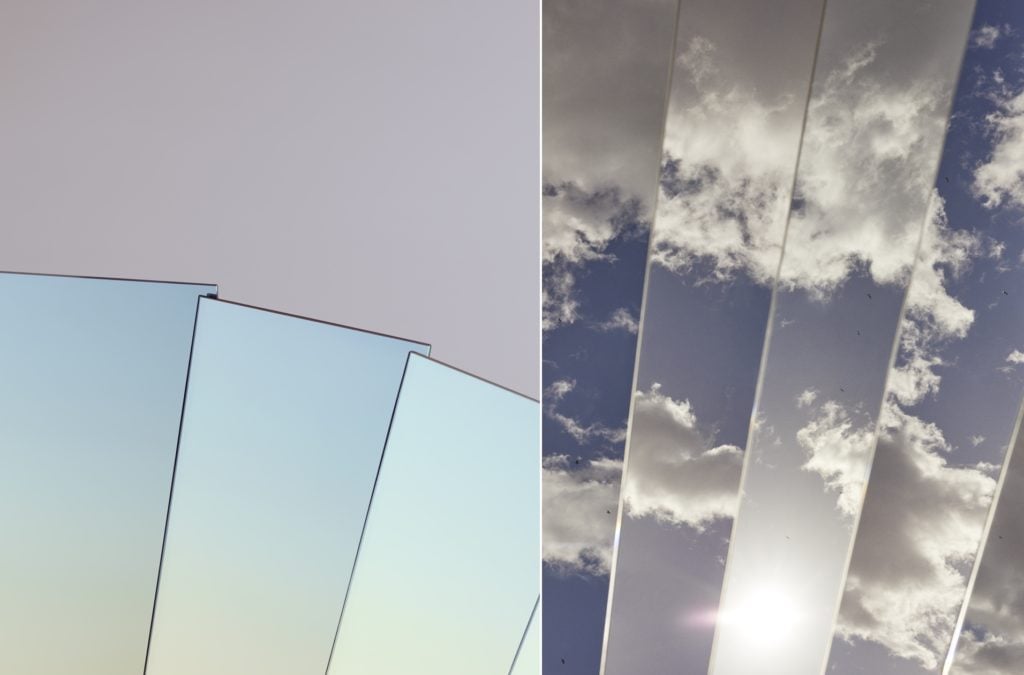
A still from the COS x Phillip K. Smith III teaser film (left) and part of Smith’s installation at the Palazzo Isimbardi in Milan. Photo by Carl Kleiner. Courtesy of COS.
At this point, Smith is between galleries, having left Los Angeles dealer Royale Projects last summer. And while artists routinely claim (often unconvincingly) to be happy about not having a gallery, Smith seems credible when he says he does not want representation for at least a year.
“Many of the base functions of the gallery are being shifted over to my studio,” he says. He is currently working closely with private collectors, city governments, art consultants, museums, and universities—and billing them directly, too.
The artist hopes he’ll be able to negotiate a better deal with a gallery that has international reach about 18 months down the road, once he has completed a slate of in-progress commissions. “I want them to approach me,” he says of dealers, “not the other way around.”
Since he’s been solo, though, things have been easier. “No more, ‘Return that call, who’s been paid, who’s paying me?’” The art world, he notes, is experiencing “changing artist-dealer relationships,” though there are “not too many other models.”
On top of it all, Smith is experiencing lot of pressure from his New York artist friends to move east. He says they are constantly asking, “’What are you doing in Palm Springs?’” But the artist wouldn’t want to live anywhere else. His art is inextricably linked to the desert.
“There’s an incredible natural light phenomenon that happens every single day here, incredible gradients of light,” he says. “Purples, blues. I like dirty colors… muddled or in-between… a smoky sunset, a denim blue sky that is both dark and bright.”
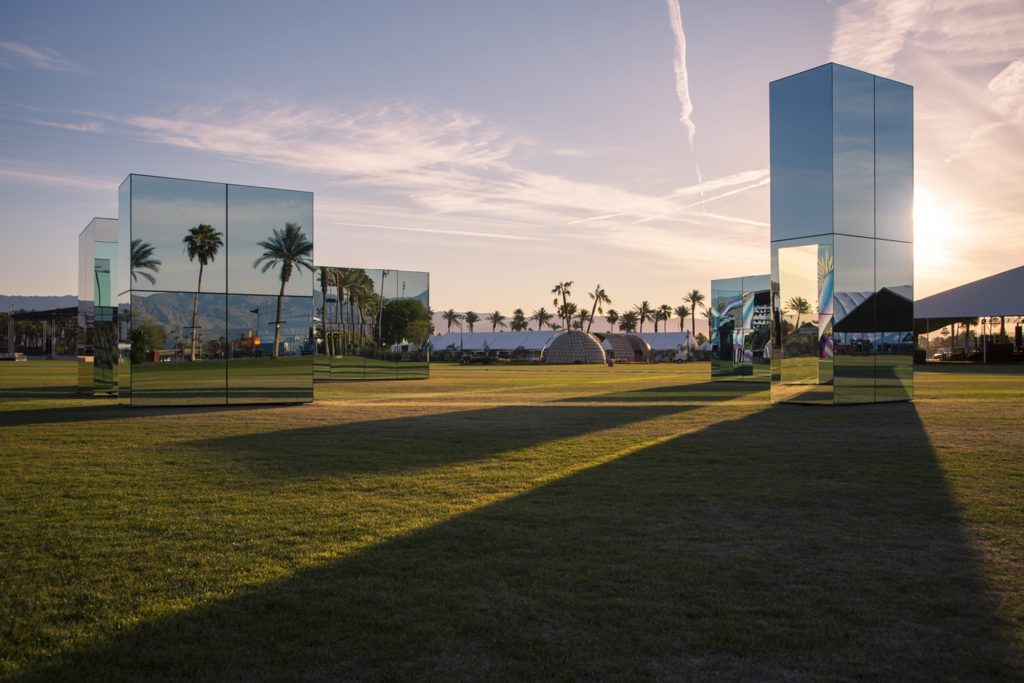
Phillip K. Smith III’s Reflection Field (2014) at Coachella’s Music Festival. Photo © Lance Gerber.
When asked if he’s overextended himself with about two dozen projects in the works, he corrects the interviewer: Actually, there are 31. Some are smaller scale, he notes, and some are awaiting next steps. A couple are similar to what he’s done before. “I like it when things begin to overlap,” he says.
Other notable projects include an installation for the Toledo Museum of Art’s Glass Pavilion and an innovative light piece for an abandoned, 100-foot-long Skyway Bridge connecting two skyscrapers in Detroit.
And if he’s lucky, one fearless patron will someday provide him the means to accomplish his most unusual dream. “I’d like to animate some Rothkos, to see them warp and change—it’s kind of a goal of mine,” he says. Rock on.